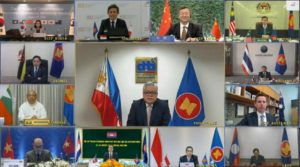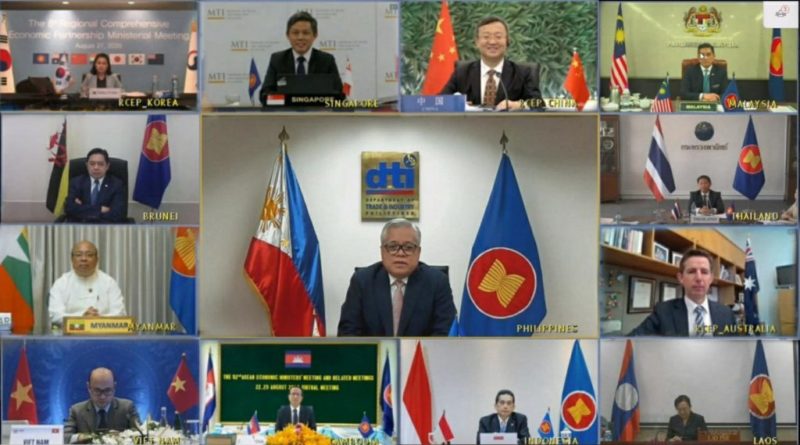
Negotiations on the Regional Comprehensive Economic Partnership (RCEP) took a big step forward after the participating countries resolved almost all remaining outstanding issues, according to the Department of Trade and Industry (DTI). This paves the way for the signing of the mega trade deal in November 2020.
The issues were discussed during the virtual 8th RCEP Intersessional Ministerial Meeting on August 27 attended by trade ministers of the Association of Southeast Asian Nations (ASEAN) and the region’s five partners Australia, China, Japan, New Zealand, and South Korea.
India is no longer part of the free trade agreement (FTA) after Indian Prime Minister Narendra Modi last year withdrew from the deal, stating that the current version did not satisfactorily address the concerns of his country. But the other states remain open to the possible return of India, as they recognize the country’s role in advancing the region’s economic integration efforts.
“While there were many challenges along the way, we kept our focus on the value and importance of RCEP and the merit of fostering regional cooperation,” DTI Secretary Ramon Lopez said in a statement.
“The conclusion of RCEP negotiation is a good symbol that notwithstanding the current pandemic, many great things can be accomplished, such as the affirmation of an international rules-based system for trade and investment in the region,” Lopez added.
Launched in November 2012, RCEP is an initiative by ASEAN to encourage trade among its member states and with the grouping’s FTA partners. Without India, RCEP accounts for 30% of the world’s global population at 2.2 billion and 28.2% of the global gross domestic product (GDP) at a combined US$23.9 trillion, much larger than other regional trading blocs.
The bloc will also account for 27.8% of the total trade at $10.5 trillion, with $5.5 trillion in exports and $4.9 trillion in imports, and contribute 23.6% of global inward foreign direct investment (FDI) and 33.5% of global outward FDI.
Once entered into force, the regional pact is poised to be the world’s largest trade deal by population and GDP.
With RCEP, enhanced market access for trade and investment will be established, improving Philippine export competitiveness in key products such as garments, automotive parts, and agricultural products like canned food and preserved fruits, the Philippines’ lead negotiator and DTI assistant secretary Allan Gepty said.
At the same time, it will encourage more investments in the country in vital sectors such as research and development, financial services, game development, and IT-BPO, Gepty said.
Lopez added that “RCEP is a major milestone for the region and its partners, and is definitely more comprehensive than any FTA of ASEAN.”
He also believes that the trade deal will bring more jobs to Filipinos and enhance the participation of micro, small, and medium enterprises in the global value chain.
“We are optimistic for the future of the country as we are set to conclude a historic milestone, especially in this time of crisis and the region’s post-pandemic recovery,” Lopez said.





